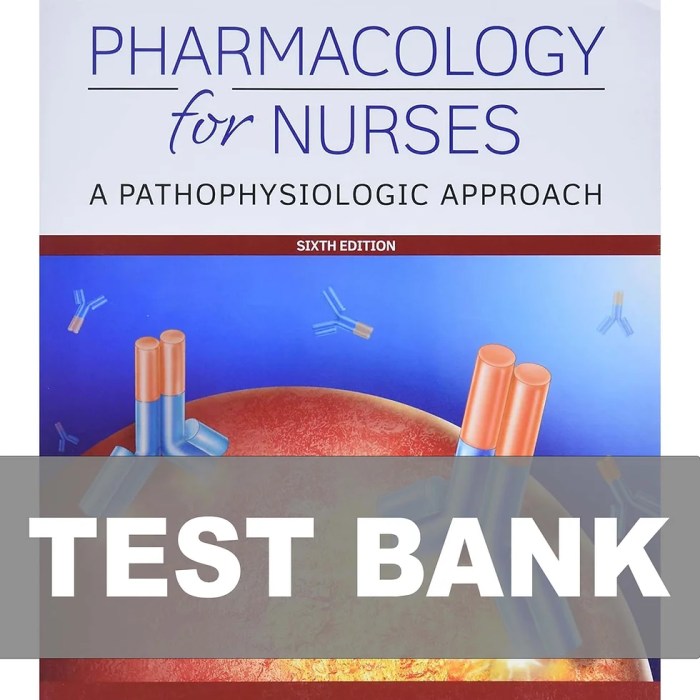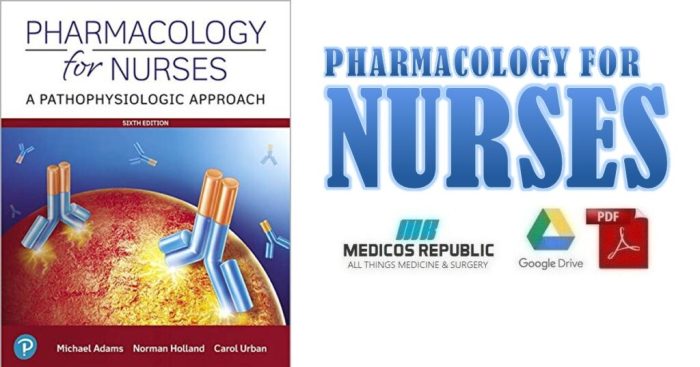Pharmacology for nurses a pathophysiologic approach 6th edition pdf – Pharmacology for Nurses: A Pathophysiologic Approach, 6th Edition PDF provides a comprehensive and up-to-date overview of pharmacology for nurses. This essential resource covers the key principles of pharmacology, drug classifications, pharmacokinetics, pharmacodynamics, and drug therapy for various conditions. With a focus on pathophysiology, the text helps nurses understand the mechanisms of action and adverse effects of drugs, enabling them to make informed decisions about patient care.
The sixth edition of this trusted textbook has been thoroughly revised and updated to reflect the latest advancements in pharmacology. New content includes information on emerging drugs, novel drug delivery systems, and the latest guidelines for medication administration. The text also features a wealth of learning aids, including case studies, practice questions, and interactive simulations.
Overview of Pharmacology for Nurses

Pharmacology is a fundamental aspect of nursing practice, providing nurses with the knowledge and skills necessary to safely and effectively administer medications to patients. Understanding the principles and concepts of pharmacology is crucial for nurses to ensure optimal patient outcomes.
Key principles of pharmacology include the understanding of drug actions, mechanisms of action, drug classifications, and factors influencing drug response. By understanding these principles, nurses can make informed decisions about drug therapy and provide comprehensive patient care.
Drug classifications provide a systematic way to organize and understand different types of medications based on their pharmacological properties, therapeutic uses, and chemical structures. This classification system helps nurses identify drugs with similar actions and adverse effects, facilitating safe and appropriate drug selection.
Pharmacokinetics and Pharmacodynamics: Pharmacology For Nurses A Pathophysiologic Approach 6th Edition Pdf

Pharmacokinetics and pharmacodynamics are essential components of pharmacology that describe the relationship between drug exposure and response. Pharmacokinetics focuses on the processes of drug absorption, distribution, metabolism, and excretion, while pharmacodynamics examines the effects of drugs on the body.
Pharmacokinetics, Pharmacology for nurses a pathophysiologic approach 6th edition pdf
Drug absorption involves the entry of a drug into the body, which can occur through various routes such as oral, intravenous, or topical administration. Distribution refers to the movement of the drug throughout the body, influenced by factors like blood flow, protein binding, and tissue affinity.
Metabolism involves the chemical transformation of the drug, primarily occurring in the liver, and affects its duration of action. Excretion involves the removal of the drug from the body, primarily through the kidneys or feces.
Pharmacodynamics
Pharmacodynamics explores the interactions between drugs and their target sites in the body. These interactions can occur at receptors, enzymes, or other molecules, leading to specific physiological or biochemical effects. Understanding drug-receptor interactions is crucial for comprehending drug mechanisms of action and predicting therapeutic outcomes.
Drug Therapy for Specific Conditions
Pharmacology plays a vital role in the treatment of various medical conditions. Here is an overview of drug therapy for some common conditions:
| Therapeutic Class | Drug Examples | Mechanism of Action | Nursing Considerations |
|---|---|---|---|
| Antihypertensives | ACE inhibitors, diuretics, beta-blockers | Reduce blood pressure through various mechanisms | Monitor blood pressure, assess for side effects |
| Antianginals | Nitrates, calcium channel blockers | Increase blood flow to the heart | Assess for chest pain relief, monitor for hypotension |
| Antiarrhythmics | Amiodarone, digoxin | Control irregular heart rhythms | Monitor heart rate and rhythm, assess for adverse effects |
| Bronchodilators | Beta-agonists, anticholinergics | Dilate airways, improve breathing | Assess for respiratory status, monitor for side effects |
| Antidepressants | SSRIs, SNRIs, TCAs | Enhance neurotransmitter levels in the brain | Monitor for mood changes, assess for suicidal ideation |
Adverse Drug Reactions and Drug Interactions

Adverse drug reactions (ADRs) are unintended and potentially harmful effects of medications. Understanding ADRs is crucial for nurses to prevent and manage them effectively.
ADRs can be classified based on their severity, type, and mechanism. Nurses should be aware of common ADRs associated with different drug classes and monitor patients for signs and symptoms of adverse reactions.
Drug interactions occur when two or more drugs taken together alter each other’s effects. These interactions can be beneficial, harmful, or have no significant impact. Nurses must assess for potential drug interactions and take appropriate measures to prevent or manage them.
Medication Administration and Patient Education
Safe and effective medication administration is a fundamental nursing responsibility. Nurses must follow proper techniques and protocols to ensure accurate drug dosage, timing, and route of administration.
Patient education is essential to ensure patients understand their medications and take them as prescribed. Nurses should provide clear instructions on medication usage, potential side effects, and storage requirements.
General Inquiries
What are the key principles of pharmacology?
The key principles of pharmacology include drug absorption, distribution, metabolism, and excretion (ADME), as well as drug-receptor interactions and pharmacodynamics.
What are the different drug classifications?
Drugs are classified into different categories based on their chemical structure, mechanism of action, or therapeutic use. Some common drug classifications include antibiotics, analgesics, anti-inflammatories, and cardiovascular drugs.
What is the importance of patient education in pharmacology?
Patient education is essential in pharmacology to ensure that patients understand how to take their medications safely and effectively. This includes information about the drug’s purpose, dosage, side effects, and interactions with other medications.